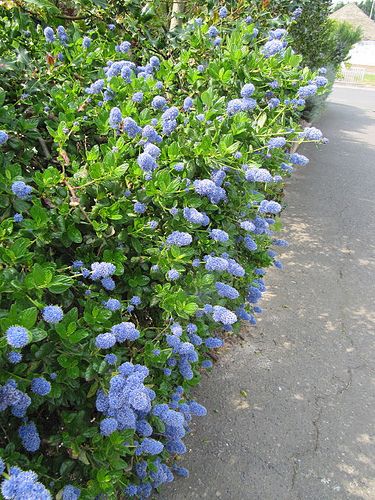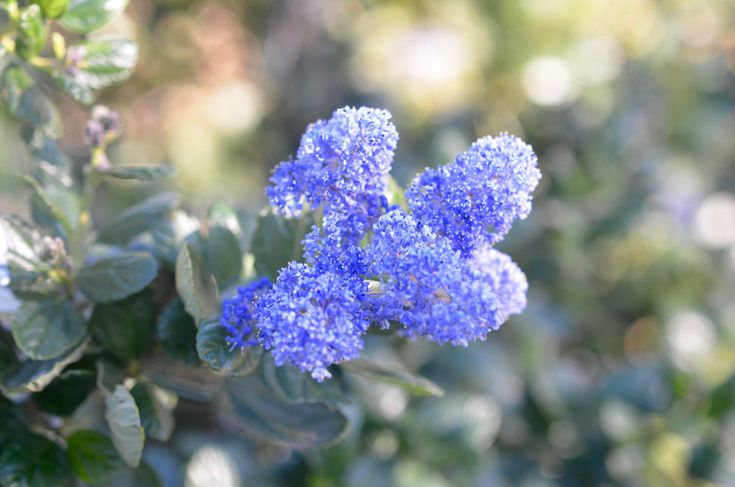Ceanothus griseus hor. ‘Yankee Point’

Ceanothus griseus hor. ‘Yankee Point’, commonly known as Yankee Point California Lilac, is a stunning evergreen shrub native to the coastal regions of California.
Renowned for its vibrant blue flowers, glossy foliage, and drought tolerance, Yankee Point California Lilac adds beauty and resilience to gardens and landscapes.
In this comprehensive article, we will delve into the botanical intricacies, habitat preferences, life cycle, ecological and cultural importance, conservation status, and care guidelines for Ceanothus griseus hor. ‘Yankee Point’.
Botanical Description
Yankee Point California Lilac is a compact, rounded shrub. It typically reaches heights of 3 to 5 feet tall and wide, making it an excellent choice for small gardens or containers.
The plant features small, oval-shaped leaves that are dark green and glossy, providing year-round interest in the landscape.
In spring, Yankee Point California Lilac bursts into bloom, producing clusters of fragrant, powder-blue flowers that attract bees, butterflies, and other pollinators.
These vibrant flowers contrast beautifully with the dark green foliage, creating a striking visual display.
Habitat and Distribution
Yankee Point California Lilac is native to the coastal regions of California, where it thrives in a variety of habitats, including coastal scrub, chaparral, and coastal bluffs.
It is found along the central and northern coast of California, from Monterey County to Mendocino County, where it grows in sandy or rocky soils with good drainage.
Yankee Point California Lilac is well-adapted to the mild maritime climate of its native habitat, tolerating salt spray, wind, and occasional coastal fog.
Life Cycle and Phenology
As an evergreen shrub, Yankee Point California Lilac exhibits year-round growth and interest in the landscape.
Growth occurs primarily in spring and summer, with new leaves and flowers emerging from dormant buds in response to increasing daylight and temperatures.
Flowering typically occurs in late spring to early summer, depending on local climate conditions, with peak bloom lasting several weeks.
The fragrant flowers attract pollinators, which visit the blooms to collect nectar and pollen.
After flowering, Yankee Point California Lilac may produce small, dry seed capsules. These capsules contain seeds that are dispersed by birds or wildlife.
Ecological and Cultural Importance
Yankee Point California Lilac plays a vital ecological role in its native habitat, providing food and habitat for a variety of wildlife species.
The flowers attract pollinators such as bees, butterflies, and hummingbirds, contributing to the health and diversity of local ecosystems.
The dense foliage of Yankee Point California Lilac provides cover for birds and small mammals. Its branching structure offers nesting sites.
Culturally, California Lilacs have been cherished by gardeners and landscapers for their ornamental value, drought tolerance, and ease of cultivation.

Caring for Ceanothus griseus hor. ‘Yankee Point’
Sunlight
Plant Yankee Point California Lilac in a location that receives full sunlight to partial shade. It prefers abundant sunlight for optimal growth and flowering.
Watering
Water young plants regularly during the first growing season to establish a strong root system.
Once established, Yankee Point California Lilac is drought tolerant and generally requires minimal irrigation. Water deeply during prolonged dry spells, especially in inland areas.
Soil
Plant in well-drained, sandy or loamy soil with good drainage.
Yankee Point California Lilac is sensitive to heavy clay soils, which can cause root rot and other problems.
Amend heavy soils with organic matter to improve drainage.
Pruning
Prune Yankee Point California Lilac lightly after flowering to maintain a compact, rounded shape and remove any dead or damaged growth.
Avoid heavy pruning, as California Lilacs bloom on old wood and excessive pruning can reduce flowering.
Fertilizing
Yankee Point California Lilac generally does not require fertilization, especially in nutrient-rich soils. If desired, apply a balanced fertilizer in spring, following the manufacturer's instructions.
Mulching
Apply a layer of organic mulch around the base of the plant to help retain moisture, suppress weeds, and insulate the roots from temperature fluctuations.
Avoid placing mulch directly against the stem to prevent rot and fungal diseases.
Following these care guidelines enables the cultivation of vibrant Yankee Point California Lilac shrubs. This contributes to conservation efforts and enhances the beauty of coastal landscapes.
Whether grown for its ornamental value, ecological benefits, or cultural significance, Yankee Point California Lilac is sure to enchant with its fragrant flowers, glossy foliage, and resilient nature.
Leave a Reply
You must be logged in to post a comment.